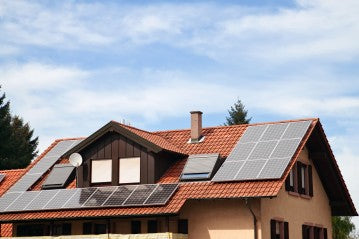
Hybrid inverter, also known as solar inverter charger and hybrid inverter charger, is an essential component of a solar power system, providing an efficient and reliable energy storage solution. One of the primary benefits of a hybrid inverter is its ability to connect to the grid, allowing you to sell excess energy back to the utility company and reduce your electricity bill. In this blog post, we'll explore how to connect a hybrid inverter to the grid.
Understanding Grid-Tied Systems
Before connecting a hybrid inverter to the grid, it's important to understand what a grid-tied system is and how it works. A grid-tied system is a solar power system that is connected to the utility grid, allowing excess energy to be sold back to the utility company. When your solar panels generate more energy than your home or business needs, the excess energy is sent back to the grid and credited to your account.
Connecting the Hybrid Inverter to the Grid
Now that we have a basic understanding of grid-tied systems, let's explore the steps to connect a hybrid inverter to the grid.
A. Steps to Connect a Hybrid Inverter to the Grid
1. Determine if your solar hybrid inverter is grid-tied compatible. Not all hybrid inverter chargers are designed for grid-tied systems, so it's important to check the manufacturer's specifications before attempting to connect it to the grid.
2. Obtain any necessary permits or approvals. Depending on where you live, there may be local regulations or requirements for connecting a solar power system to the grid. Be sure to obtain any necessary permits or approvals before proceeding.
3. Install the hybrid inverter. The hybrid inverter should be installed and wired according to the manufacturer's instructions. It's important to follow all safety precautions and to hire a licensed electrician to perform the installation.
4. Connect the hybrid inverter to the utility grid. The hybrid inverter should be connected to a dedicated circuit breaker that is connected to the utility grid. This allows excess energy to flow back to the grid and be credited to your account.
B. Safety Precautions to Take During Installation
When connecting a hybrid inverter to the grid, it's important to take all necessary safety precautions to prevent accidents or damage to the system.
1. Turn off all power sources before beginning the installation.
2. Use proper tools and equipment when working with electrical components.
3. Always wear safety gear, such as gloves and safety glasses.
4. Follow all manufacturer's instructions and local regulations.
Configuring the Hybrid Inverter for Grid Connection
Once the hybrid inverter is connected to the grid, it needs to be configured to ensure proper functioning.
A. Programming the Inverter for Grid Connection
The hybrid inverter should be programmed to ensure that it's functioning properly and safely.
1. Set the inverter to grid-tied mode. This ensures that the inverter is operating in a way that is compatible with the utility grid.
2. Set the inverter to the appropriate voltage and frequency. The voltage and frequency of the inverter should match the voltage and frequency of the utility grid.
B. Testing the System to Ensure It's Working Properly
After programming the hybrid inverter, it's important to test the system to ensure that it's functioning properly and safely.
1. Check for any error messages or warning lights. These can indicate that there is a problem with the system.
2. Test the system under different conditions, such as during peak hours or when there is low sunlight.
3. Monitor the system's performance over time to ensure that it's functioning properly.
Final Steps and Considerations
Before wrapping up, let's review some final steps and considerations to ensure that your hybrid inverter is connected to the grid properly and functioning efficiently.
A. Final Steps to Ensure Proper Functioning
1. Check for any errors or warning messages on a regular basis.
2. Monitor the system's performance over time to ensure that it's functioning properly.
B. Considerations for Grid Connection
1. Regulations and Requirements: Be sure to check local regulations and requirements for grid-tied systems before connecting your hybrid inverter to the grid.
2. Ongoing Maintenance and Upkeep: Regular maintenance and upkeep are essential to keeping your hybrid inverter functioning properly and efficiently.
Conclusion
In conclusion, connecting a solar hybrid inverter to the grid is an important step in creating a more efficient and reliable solar power system. By following the steps outlined in this blog post and taking all necessary safety precautions, you can connect your hybrid inverter to the grid and start enjoying the benefits of reduced electricity bills and a more sustainable future.

0 Kommentare